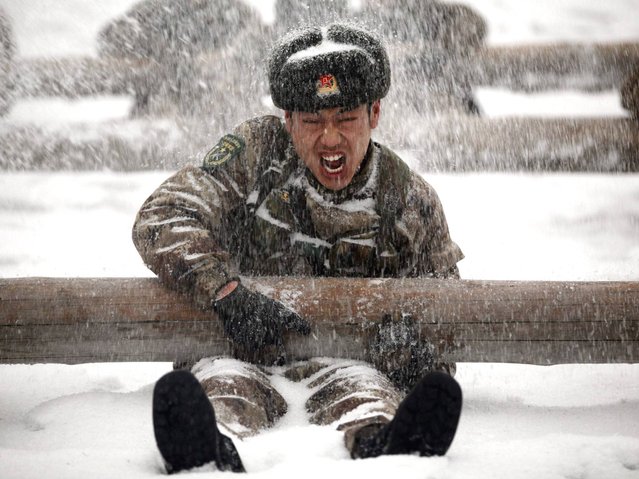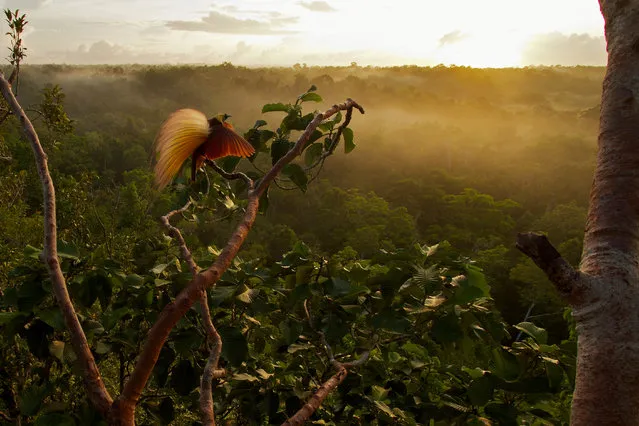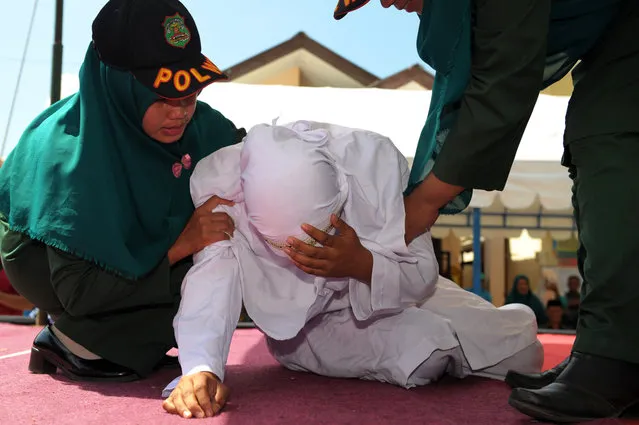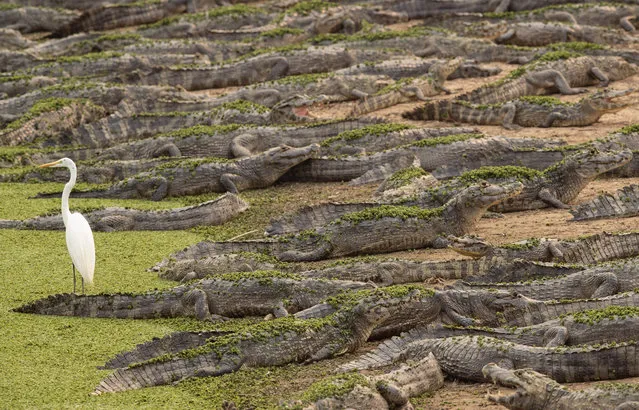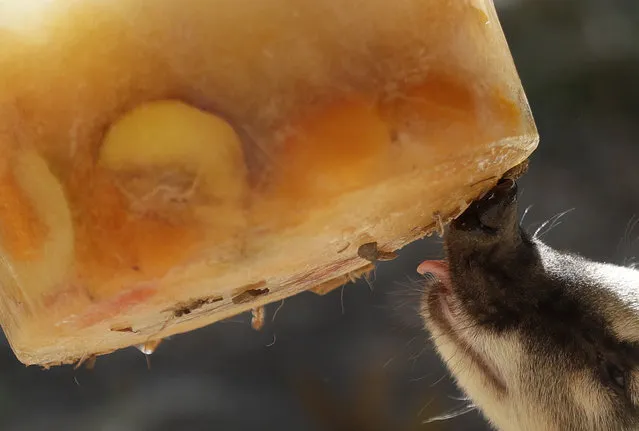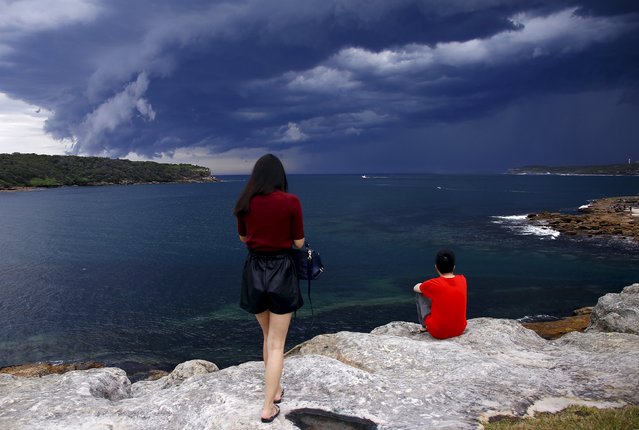
Chinese tourists watch storm clouds moving along the coast towards the city of Sydney, Australia, November 6, 2015. Powerful storms swept across the city on Friday, with the Australian Bureau of Meteorology issuing a warning for severe thunderstorms with large hailstones, heavy rainfall and damaging winds, local media reported. (Photo by David Gray/Reuters)
